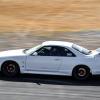Time Attack
Announcements
-
Similar Content
-
Latest Posts
-
Nah its a server spammer thing Although, now that I manually approve all the accounts I can probably loosen up some of the restrictions.
-
Thread bump, again! Although, no bad news this time. Posting for the sake of possible root cause. Basically, I rebuilt it (mostly stock), installed Haltech + sensors, had it running fine on new ECU. Still not really understanding why it cracked pistons last time. Got to tuners, and while checking timing, noticed +-10deg of timing scatter while revving. Changed CAS, and it was rock solid. While not definitive, can't imagine seeing 20+ psi with that amount of scatter would be a good thing. Also glad I found something. Bit more of a run down; Carried out a stock rebuild, a set of stock pistons, out of a spare bottom end. Everything stock apart from head studs and oil restrictors. (so I can pretend I didn't let the Nissan out, ha.) Armed with the measuring gear and FSM, set about doing overhaul. Oil restrictors as per oil control thread for a RB25, stock oil pump, drifting. Head drain/vent from rear of head, to passenger side of sump above oil level. Two dash 10 vent lines from drivers side of sump (unused atm) Hi octane style cam cover breather kit Splash covers over last 2 cam caps. Both breather lines from cam covers to vented to atmosphere catch can, not plumbed back into sump (wanted to see what it was actually breathing). Got it run in (did about a 1000km) no to low boost scenario, As I had questions over old ECU setup. Installed haltech +sensors for flex Retune on E85 (finding CAS Issue along the way), made 300rwkw at 20psi, out of wastegate. Did a drift day the next day (yes, it was a big weekend!) and was checking catch can throughout the day, ZERO blowby. I mean nothing. Lines from cam covers are not even wet. Done a bunch of street driving, spirited and catch can is still dry. Early days I guess, but pretty happy so far. Also now run 10w60, up from the 10w40 that I used to run. Oil pressure is significantly better, especially when hot (as you would expect)
-
Thanks buddy. I thought it was a server storage thing. 🤣
-
By TheBushKangaroo · Posted
Perfect! Thanks for this, both look like great options!
-






Recommended Posts
Create an account or sign in to comment
You need to be a member in order to leave a comment
Create an account
Sign up for a new account in our community. It's easy!
Register a new accountSign in
Already have an account? Sign in here.
Sign In Now